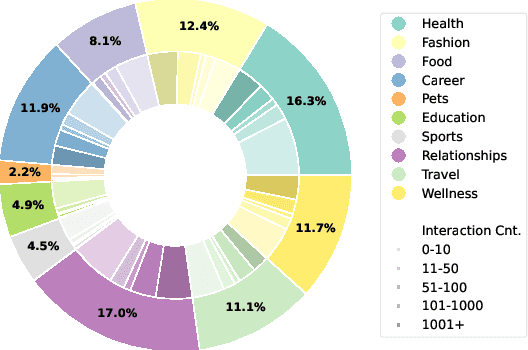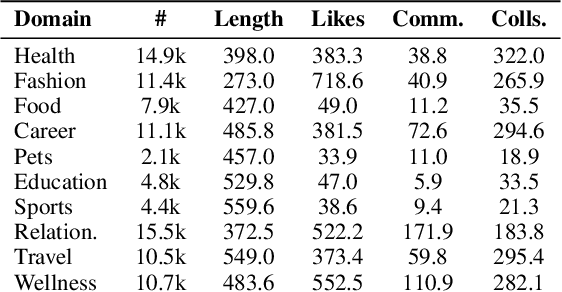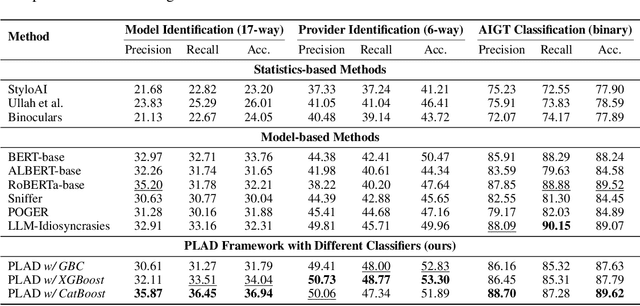Linlin Shen
X-ray Insights Unleashed: Pioneering the Enhancement of Multi-Label Long-Tail Data
Dec 24, 2025Abstract:Long-tailed pulmonary anomalies in chest radiography present formidable diagnostic challenges. Despite the recent strides in diffusion-based methods for enhancing the representation of tailed lesions, the paucity of rare lesion exemplars curtails the generative capabilities of these approaches, thereby leaving the diagnostic precision less than optimal. In this paper, we propose a novel data synthesis pipeline designed to augment tail lesions utilizing a copious supply of conventional normal X-rays. Specifically, a sufficient quantity of normal samples is amassed to train a diffusion model capable of generating normal X-ray images. This pre-trained diffusion model is subsequently utilized to inpaint the head lesions present in the diseased X-rays, thereby preserving the tail classes as augmented training data. Additionally, we propose the integration of a Large Language Model Knowledge Guidance (LKG) module alongside a Progressive Incremental Learning (PIL) strategy to stabilize the inpainting fine-tuning process. Comprehensive evaluations conducted on the public lung datasets MIMIC and CheXpert demonstrate that the proposed method sets a new benchmark in performance.
SSA3D: Text-Conditioned Assisted Self-Supervised Framework for Automatic Dental Abutment Design
Dec 12, 2025Abstract:Abutment design is a critical step in dental implant restoration. However, manual design involves tedious measurement and fitting, and research on automating this process with AI is limited, due to the unavailability of large annotated datasets. Although self-supervised learning (SSL) can alleviate data scarcity, its need for pre-training and fine-tuning results in high computational costs and long training times. In this paper, we propose a Self-supervised assisted automatic abutment design framework (SS$A^3$D), which employs a dual-branch architecture with a reconstruction branch and a regression branch. The reconstruction branch learns to restore masked intraoral scan data and transfers the learned structural information to the regression branch. The regression branch then predicts the abutment parameters under supervised learning, which eliminates the separate pre-training and fine-tuning process. We also design a Text-Conditioned Prompt (TCP) module to incorporate clinical information (such as implant location, system, and series) into SS$A^3$D. This guides the network to focus on relevant regions and constrains the parameter predictions. Extensive experiments on a collected dataset show that SS$A^3$D saves half of the training time and achieves higher accuracy than traditional SSL methods. It also achieves state-of-the-art performance compared to other methods, significantly improving the accuracy and efficiency of automated abutment design.
A Lightweight 3D Anomaly Detection Method with Rotationally Invariant Features
Nov 17, 2025Abstract:3D anomaly detection (AD) is a crucial task in computer vision, aiming to identify anomalous points or regions from point cloud data. However, existing methods may encounter challenges when handling point clouds with changes in orientation and position because the resulting features may vary significantly. To address this problem, we propose a novel Rotationally Invariant Features (RIF) framework for 3D AD. Firstly, to remove the adverse effect of variations on point cloud data, we develop a Point Coordinate Mapping (PCM) technique, which maps each point into a rotationally invariant space to maintain consistency of representation. Then, to learn robust and discriminative features, we design a lightweight Convolutional Transform Feature Network (CTF-Net) to extract rotationally invariant features for the memory bank. To improve the ability of the feature extractor, we introduce the idea of transfer learning to pre-train the feature extractor with 3D data augmentation. Experimental results show that the proposed method achieves the advanced performance on the Anomaly-ShapeNet dataset, with an average P-AUROC improvement of 17.7\%, and also gains the best performance on the Real3D-AD dataset, with an average P-AUROC improvement of 1.6\%. The strong generalization ability of RIF has been verified by combining it with traditional feature extraction methods on anomaly detection tasks, demonstrating great potential for industrial applications.
Context-Gated Cross-Modal Perception with Visual Mamba for PET-CT Lung Tumor Segmentation
Oct 31, 2025Abstract:Accurate lung tumor segmentation is vital for improving diagnosis and treatment planning, and effectively combining anatomical and functional information from PET and CT remains a major challenge. In this study, we propose vMambaX, a lightweight multimodal framework integrating PET and CT scan images through a Context-Gated Cross-Modal Perception Module (CGM). Built on the Visual Mamba architecture, vMambaX adaptively enhances inter-modality feature interaction, emphasizing informative regions while suppressing noise. Evaluated on the PCLT20K dataset, the model outperforms baseline models while maintaining lower computational complexity. These results highlight the effectiveness of adaptive cross-modal gating for multimodal tumor segmentation and demonstrate the potential of vMambaX as an efficient and scalable framework for advanced lung cancer analysis. The code is available at https://github.com/arco-group/vMambaX.
DAP-MAE: Domain-Adaptive Point Cloud Masked Autoencoder for Effective Cross-Domain Learning
Oct 24, 2025Abstract:Compared to 2D data, the scale of point cloud data in different domains available for training, is quite limited. Researchers have been trying to combine these data of different domains for masked autoencoder (MAE) pre-training to leverage such a data scarcity issue. However, the prior knowledge learned from mixed domains may not align well with the downstream 3D point cloud analysis tasks, leading to degraded performance. To address such an issue, we propose the Domain-Adaptive Point Cloud Masked Autoencoder (DAP-MAE), an MAE pre-training method, to adaptively integrate the knowledge of cross-domain datasets for general point cloud analysis. In DAP-MAE, we design a heterogeneous domain adapter that utilizes an adaptation mode during pre-training, enabling the model to comprehensively learn information from point clouds across different domains, while employing a fusion mode in the fine-tuning to enhance point cloud features. Meanwhile, DAP-MAE incorporates a domain feature generator to guide the adaptation of point cloud features to various downstream tasks. With only one pre-training, DAP-MAE achieves excellent performance across four different point cloud analysis tasks, reaching 95.18% in object classification on ScanObjectNN and 88.45% in facial expression recognition on Bosphorus.
* 14 pages, 7 figures, conference
RedNote-Vibe: A Dataset for Capturing Temporal Dynamics of AI-Generated Text in Social Media
Sep 26, 2025



Abstract:The proliferation of Large Language Models (LLMs) has led to widespread AI-Generated Text (AIGT) on social media platforms, creating unique challenges where content dynamics are driven by user engagement and evolve over time. However, existing datasets mainly depict static AIGT detection. In this work, we introduce RedNote-Vibe, the first longitudinal (5-years) dataset for social media AIGT analysis. This dataset is sourced from Xiaohongshu platform, containing user engagement metrics (e.g., likes, comments) and timestamps spanning from the pre-LLM period to July 2025, which enables research into the temporal dynamics and user interaction patterns of AIGT. Furthermore, to detect AIGT in the context of social media, we propose PsychoLinguistic AIGT Detection Framework (PLAD), an interpretable approach that leverages psycholinguistic features. Our experiments show that PLAD achieves superior detection performance and provides insights into the signatures distinguishing human and AI-generated content. More importantly, it reveals the complex relationship between these linguistic features and social media engagement. The dataset is available at https://github.com/testuser03158/RedNote-Vibe.
EyePCR: A Comprehensive Benchmark for Fine-Grained Perception, Knowledge Comprehension and Clinical Reasoning in Ophthalmic Surgery
Sep 19, 2025Abstract:MLLMs (Multimodal Large Language Models) have showcased remarkable capabilities, but their performance in high-stakes, domain-specific scenarios like surgical settings, remains largely under-explored. To address this gap, we develop \textbf{EyePCR}, a large-scale benchmark for ophthalmic surgery analysis, grounded in structured clinical knowledge to evaluate cognition across \textit{Perception}, \textit{Comprehension} and \textit{Reasoning}. EyePCR offers a richly annotated corpus with more than 210k VQAs, which cover 1048 fine-grained attributes for multi-view perception, medical knowledge graph of more than 25k triplets for comprehension, and four clinically grounded reasoning tasks. The rich annotations facilitate in-depth cognitive analysis, simulating how surgeons perceive visual cues and combine them with domain knowledge to make decisions, thus greatly improving models' cognitive ability. In particular, \textbf{EyePCR-MLLM}, a domain-adapted variant of Qwen2.5-VL-7B, achieves the highest accuracy on MCQs for \textit{Perception} among compared models and outperforms open-source models in \textit{Comprehension} and \textit{Reasoning}, rivalling commercial models like GPT-4.1. EyePCR reveals the limitations of existing MLLMs in surgical cognition and lays the foundation for benchmarking and enhancing clinical reliability of surgical video understanding models.
Agent4FaceForgery: Multi-Agent LLM Framework for Realistic Face Forgery Detection
Sep 16, 2025Abstract:Face forgery detection faces a critical challenge: a persistent gap between offline benchmarks and real-world efficacy,which we attribute to the ecological invalidity of training data.This work introduces Agent4FaceForgery to address two fundamental problems: (1) how to capture the diverse intents and iterative processes of human forgery creation, and (2) how to model the complex, often adversarial, text-image interactions that accompany forgeries in social media. To solve this,we propose a multi-agent framework where LLM-poweredagents, equipped with profile and memory modules, simulate the forgery creation process. Crucially, these agents interact in a simulated social environment to generate samples labeled for nuanced text-image consistency, moving beyond simple binary classification. An Adaptive Rejection Sampling (ARS) mechanism ensures data quality and diversity. Extensive experiments validate that the data generated by our simulationdriven approach brings significant performance gains to detectors of multiple architectures, fully demonstrating the effectiveness and value of our framework.
LabelGS: Label-Aware 3D Gaussian Splatting for 3D Scene Segmentation
Aug 27, 2025Abstract:3D Gaussian Splatting (3DGS) has emerged as a novel explicit representation for 3D scenes, offering both high-fidelity reconstruction and efficient rendering. However, 3DGS lacks 3D segmentation ability, which limits its applicability in tasks that require scene understanding. The identification and isolating of specific object components is crucial. To address this limitation, we propose Label-aware 3D Gaussian Splatting (LabelGS), a method that augments the Gaussian representation with object label.LabelGS introduces cross-view consistent semantic masks for 3D Gaussians and employs a novel Occlusion Analysis Model to avoid overfitting occlusion during optimization, Main Gaussian Labeling model to lift 2D semantic prior to 3D Gaussian and Gaussian Projection Filter to avoid Gaussian label conflict. Our approach achieves effective decoupling of Gaussian representations and refines the 3DGS optimization process through a random region sampling strategy, significantly improving efficiency. Extensive experiments demonstrate that LabelGS outperforms previous state-of-the-art methods, including Feature-3DGS, in the 3D scene segmentation task. Notably, LabelGS achieves a remarkable 22X speedup in training compared to Feature-3DGS, at a resolution of 1440X1080. Our code will be at https://github.com/garrisonz/LabelGS.
D^3-Talker: Dual-Branch Decoupled Deformation Fields for Few-Shot 3D Talking Head Synthesis
Aug 20, 2025Abstract:A key challenge in 3D talking head synthesis lies in the reliance on a long-duration talking head video to train a new model for each target identity from scratch. Recent methods have attempted to address this issue by extracting general features from audio through pre-training models. However, since audio contains information irrelevant to lip motion, existing approaches typically struggle to map the given audio to realistic lip behaviors in the target face when trained on only a few frames, causing poor lip synchronization and talking head image quality. This paper proposes D^3-Talker, a novel approach that constructs a static 3D Gaussian attribute field and employs audio and Facial Motion signals to independently control two distinct Gaussian attribute deformation fields, effectively decoupling the predictions of general and personalized deformations. We design a novel similarity contrastive loss function during pre-training to achieve more thorough decoupling. Furthermore, we integrate a Coarse-to-Fine module to refine the rendered images, alleviating blurriness caused by head movements and enhancing overall image quality. Extensive experiments demonstrate that D^3-Talker outperforms state-of-the-art methods in both high-fidelity rendering and accurate audio-lip synchronization with limited training data. Our code will be provided upon acceptance.
 Add to Chrome
Add to Chrome Add to Firefox
Add to Firefox Add to Edge
Add to Edge